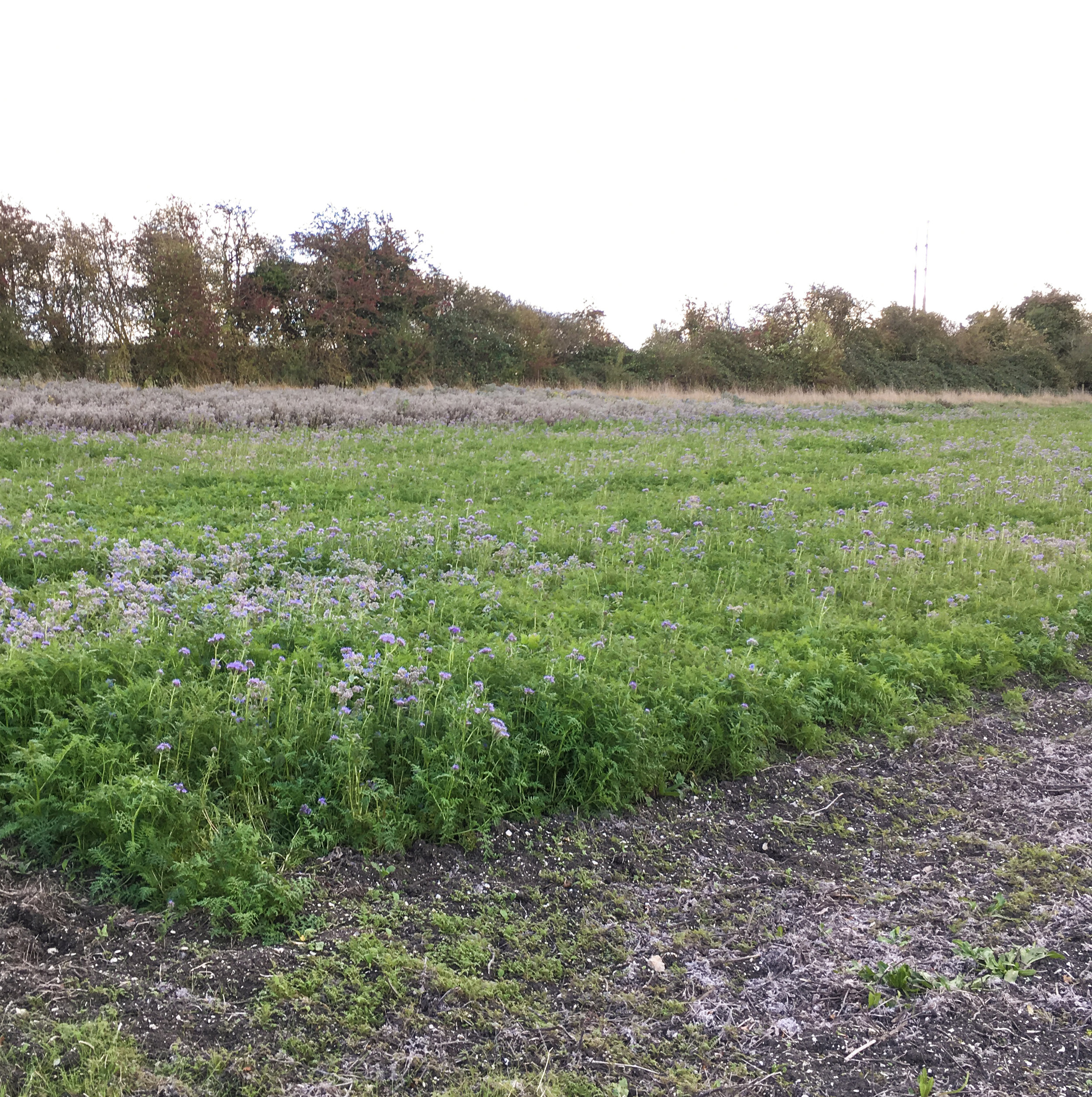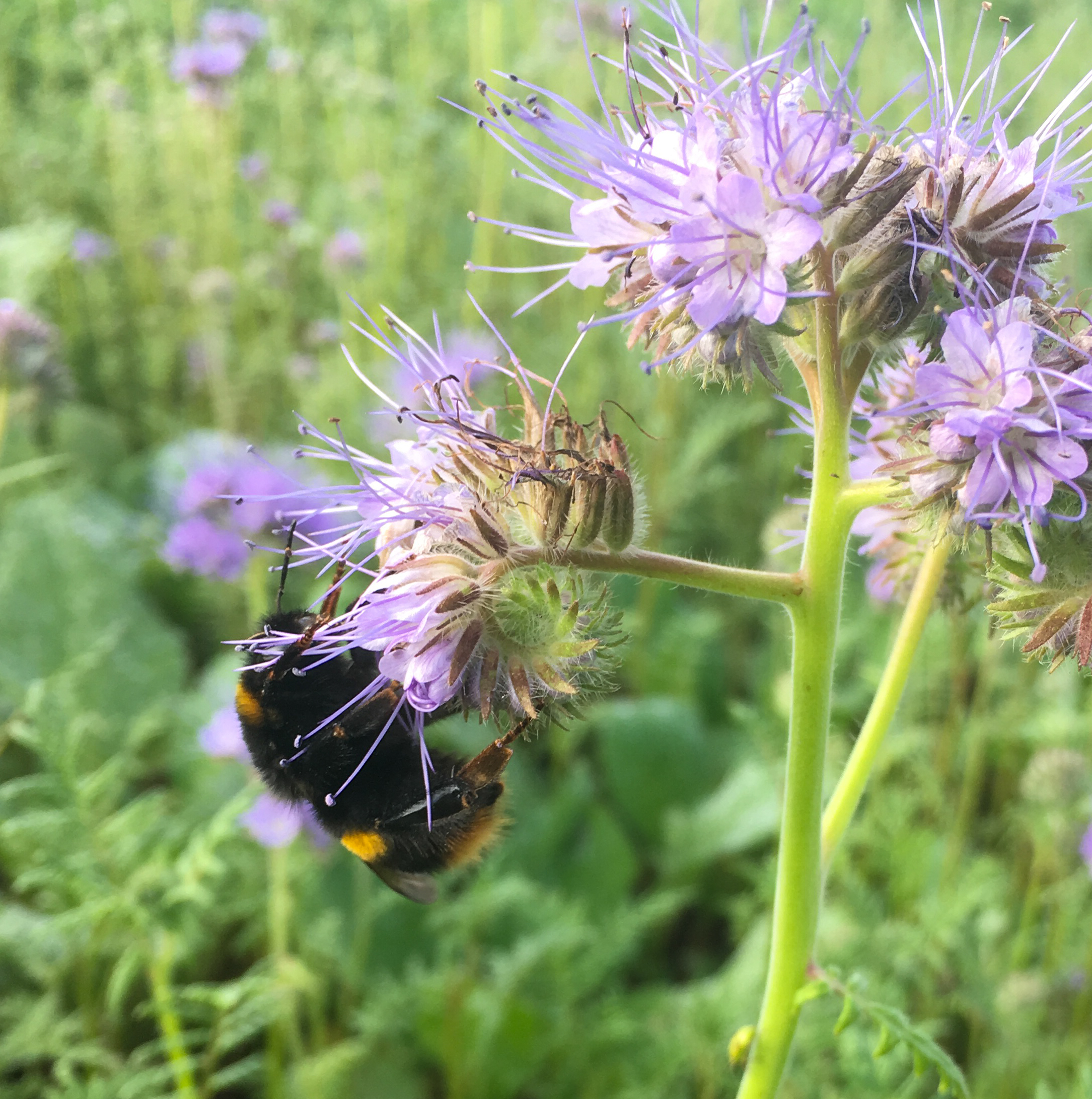Our Bee-forage acre
In addition to maintaining areas of wildflower, long grass and hedgerows, we also sow an acre of the rosybee site to a mix of borage and phacelia. Both are fast growing, reliable and abundant producers of nectar to give all local pollinators a boost. On a nice warm day this area attracts up to 16 honey bees and 4 bumblebees per square meter and the odd solitary bee, butterfly and moth too.
We try to sow in three successive strips to extend the flowering period, from the natural 6 to 10 weeks that these plants would flower, to up to 4 months. Most of the time we manage to get the plants to self-seed and if the timing is right we get at least one section to over-winter as small seedlings. We also collect and dry as much seed as possible for the following year.
Not having a farming background this has taken a few years to understand and get right. However this year summer went on for such a long time that the self-seeded section we had targeted as the over-winter crop is knee-high and flowering now. There are only a few bees visiting it as most of the bumblebees are now in hibernation but the honey bees are still working it if the sun warms the day up enough. It was warm enough last week for a few new buff-tail queens to have a go but they should be safely underground now.
The lush crop you see in the picture will die back in the coming months and we will lightly harrow it into the top soil and resow.
We believe that this nectar resource has been really important to support our local bees and well worth the effort. Both phacelia and borage are really easy to grow from seed and can be fitted into any spaces you may have in your garden: just chuck in some seed and pull out any excess later.


